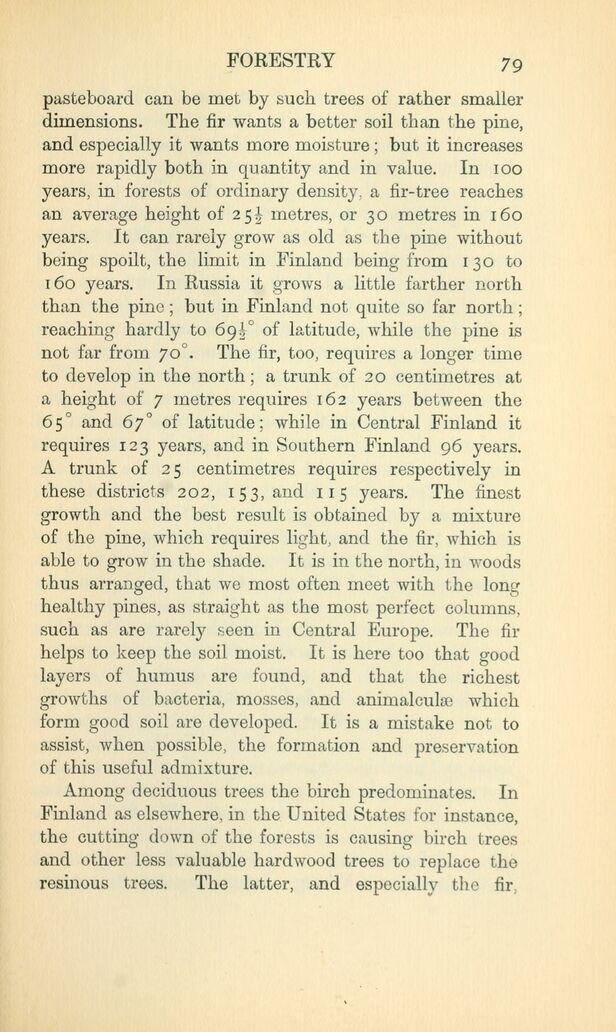
Full resolution (JPEG) - On this page / på denna sida - V. Forestry

<< prev. page << föreg. sida << >> nästa sida >> next page >>
Below is the raw OCR text
from the above scanned image.
Do you see an error? Proofread the page now!
Här nedan syns maskintolkade texten från faksimilbilden ovan.
Ser du något fel? Korrekturläs sidan nu!
This page has been proofread at least once.
(diff)
(history)
Denna sida har korrekturlästs minst en gång.
(skillnad)
(historik)
pasteboard can be met by such trees of rather smaller
dimensions. The fir wants a better soil than the pine,
and especially it wants more moisture; but it increases
more rapidly both in quantity and in value. In 100
years, in forests of ordinary density, a fir-tree reaches
an average height of 25½ metres, or 30 metres in 160
years. It can rarely grow as old as the pine without
being spoilt, the limit in Finland being from 130 to
160 years. In Russia it grows a little farther north
than the pine; but in Finland not quite so far north;
reaching hardly to 69½° of latitude, while the pine is
not far from 70°. The fir, too, requires a longer time
to develop in the north; a trunk of 20 centimetres at
a height of 7 metres requires 162 years between the
65° and 67° of latitude; while in Central Finland it
requires 123 years, and in Southern Finland 96 years.
A trunk of 25 centimetres requires respectively in
these districts 202, 153, and 115 years. The finest
growth and the best result is obtained by a mixture
of the pine, which requires light, and the fir, which is
able to grow in the shade. It is in the north, in woods
thus arranged, that we most often meet with the long
healthy pines, as straight as the most perfect columns,
such as are rarely seen in Central Europe. The fir
helps to keep the soil moist. It is here too that good
layers of humus are found, and that the richest
growths of bacteria, mosses, and animalculæ which
form good soil are developed. It is a mistake not to
assist, when possible, the formation and preservation
of this useful admixture.
Among deciduous trees the birch predominates. In
Finland as elsewhere, in the United States for instance,
the cutting down of the forests is causing birch trees
and other less valuable hardwood trees to replace the
resinous trees. The latter, and especially the fir,
<< prev. page << föreg. sida << >> nästa sida >> next page >>